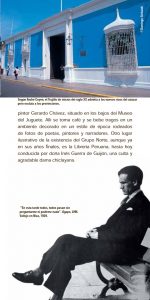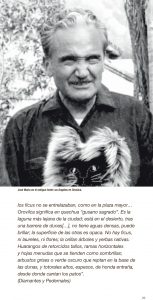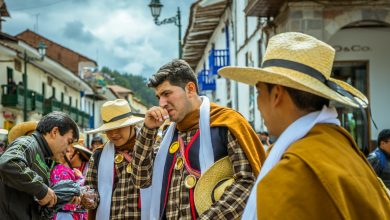A Different Way of Experiencing Peru

There are as many ways to travel as there are travelers and Peru is an immense palate of possibilities. Five stars, backpackers, community, rural: the ways are infinite. There are routes for the lovers of nature, of adventure, and for the hungry who travel the culinary routes. We do not even need to mention the archeological trails in which Peru, for those dedicated to this delight, would be something like a candy store with a free pass for a five-year-old child. There are other routes that are less promoted yet still very interesting, such as those dedicated to the fans of literature.
Prom Peru developed some years ago, under the signature of the journalist Rafo León, a collection of guides for traveling the routes of Peru for those who love Peruvian authors. There they can see the scenery and sites in which they spent their lives and where they formed their work.

Mario Vargas Llosa. This route takes us through the neighborhoods of Lima through his work: The Cubs and Other Stories (1967), The Cubs (1967), The Time of the Hero (1963), and Conversation in the Cathedral (1967). It is a distinctive vision for knowing and recognizing the social and geographic space of Miraflores, Barranco, Diego Ferré, el Cercado, La Victoria, el Callao, or the Herradura Beach, with their architecture, their monumnets, their codes, atmospheres, and every day life.
The Norte of César Vallejo. This route through the world of Peru’s great poet begins in Santiago de Chuco, the birth place of this write who was one of the greatest poetic innovators of the twentieth century. It continues in Huamachuco and Cachicadán. It also invites us to become acquainted with the bohemian haunts of Trujillo, the city in which Vallejo not only carried out his unviersity studies but also served as a source of inspiration for many because of his work. We visit the haciendas of the North coast and enter the western slopes of the norther Andes range. It is a rural scene with eucalyptus forests, cane fields, and arcehology, which is not absent from his work. We visit the PreInca site of Macahuamachuco en in the province of Sanchez Carrion, La Libertat. The works that lead us through this area are: Trilce (1922), The Dark Heralds (1918) and his colelction of short stories Escalas Melografiadas (1923).

The Andean South of José María Arguedas. The almost nomadic life and the bilingual world of Quechua and Spanish in which José María Arguedas grew up is permanently reflected in his work. This route takes us to Andahuaylas the birthplace of Arguedas which is prominently reflected in his work. However it also takes us elsewhere in the south. Our travels begin in Ica, described in his novel Diamantes y pedernales, and then takes us on the road that leads to Puquio. We make stops in Andamarca, Yacu Raymi, Chalhuanca, Abancay, Curahuasi and Saywite in order to arrive, finally, at our destination which are the stones which amazed Ernesto in Deep Rivers: Cusco. This is a journey that fills us with places, archeological sties, customs, beliefs, and the magic of Andean colors. It is also one in which we appreciate Argueda’s references to local fiestas with their rituals, such as for example the Danzaq and of course the majesty of the Scissor Dance. This route became fixed in images in two broadcasts of the program Reportaje al Peru that can be easily found here.

Unfortunately the written guidebooks can no longer be found in the tourist information booths of PromPeru. They are also not easily found on the Internet. But you can find them if you put in a lot of hard work.
For those who wish to see the electronic versions of these guides we will give you links where you can download them. Enjoy and plan to traverse Peru mixing fiction, reality and poetry.
La Lima de Vargas Llosa: http://media.peru.info/catalogo/attach/vargas_10549.pdf
El Norte de Céar Vallejo : http://media.peru.info/catalogo/Attach/vallejo_10926.pdf
El Sur Andino de José María Arguedas: http://media.peru.info/issuu/guia_jma.pdf




